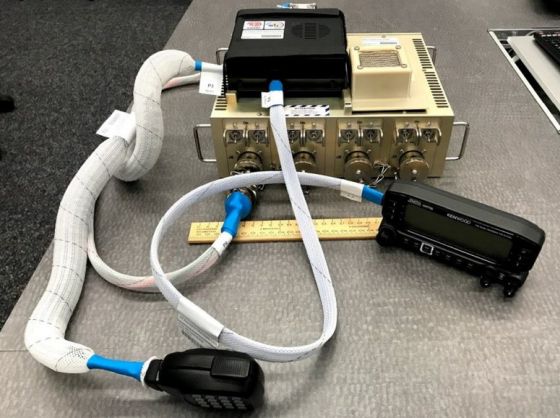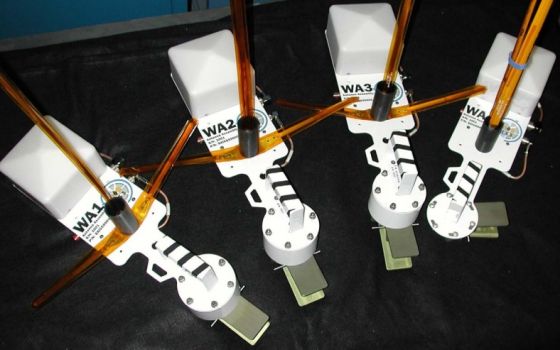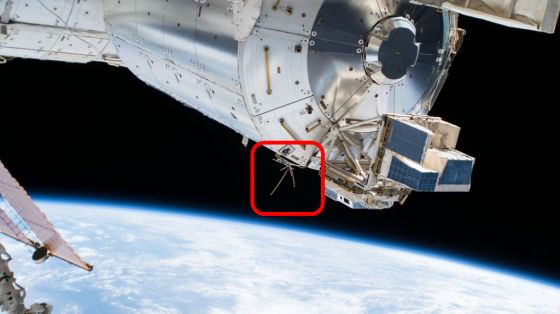International Space Station amateur radio 'ARISS' system updated for the first time in 20 years

The radio system used in the project '
September 2, 2020 --ARIS S
https://www.ariss.org/press-releases/september-2-2020
New Ham Radio Onboard The ISS Is On The Air --K0LWC
http://k0lwc.com/new-ham-radio-onboard-the-iss-is-on-the-air/
JVC KENWOOD Corporation decides to install our amateur radio on the International Space Station
https://www.jvckenwood.com/jp/press/2020/03/press_200313_1.html
Thank you for your patience!
— KENWOOD elec (Japan) (@KENWOOD_elec_jp) September 3, 2020
Yesterday, the amateur radio TM-D710GA was successfully installed in the #ISS European Experiment Module Columbus, set to cross-band repeater mode, and it was informed that ARISS members had successfully communicated between Italy and Belgium. (^ o ^) /
ARISS Facebook: https://t.co/oJUBow1HYF https://t.co/li1vEl3fka pic.twitter.com/tC9oWrDYCm
ARISS is an ham radio project by astronauts stationed on the ISS, which has communicated with amateur radio operators and with school students called 'school contacts.' School contacts have been made in Japan since 2001, and 99 school contacts have been successful at the time of writing the article.
Junior high school students succeed in communicating with the International Space Station at Morita Junior High School in Fukui City, Fukui Prefecture | 2020_News
https://www.jarl.org/Japanese/2_Joho/News2020/2020_news-2.htm#0217

The wireless system installed on the ISS so far was made by

The newly introduced system is called 'Inter Operable Radio System (IORS)'. It was launched on March 6, 2020 from the Kennedy Space Center to the ISS by SpaceX's '

The TM-D710GA is an ISS specification of the commercially available TM-D710G , and has a special specification that optimizes heat dissipation performance and operation functions assuming operation in a situation where there is almost no gravity. Specifically, the output is limited to 25W to protect the safety of the ISS, and the firmware and menu screen are custom-made by the ISS, and a high-output, high-reliability fan to enable continuous operation of repeaters. It is said that it is equipped with. The reliability of the fan that produces the air flow is especially important because convection does not occur in an environment with little gravity.

It is said that the biggest issue when installing amateur radio on the ISS is the 'power supply'. The multi-voltage power supply operates at 120V or 28V DC and must meet the different requirements of both NASA and Russia. Power supply developed to meet a wide range of requirements such as power quality, fan noise level, temperature, specific LED color, special connector, non-combustible wiring, air filter that does not leak dust and lint, etc. is used. I am.

The ISS is equipped with four antennas for wireless communication in consideration of redundancy, and all of them are covered with Kapton so that they can withstand operation even in extremely harsh temperature environments.

This is the antenna image used in IORS. It faces the earth.

In addition to the system introduced this time, ARISS is also developing the flight wireless system 'ARISS-Pi' that uses the L-band repeater uplink function and Raspberry Pi.
At the time of writing the article, the TM-D710GA is operating in cross-band repeater mode, so the ISS that passes over the sky can be used as a 'repeater' for FM radio waves. If you send a signal to the uplink frequency of 145.99MHz, the signal will be returned at the downlink frequency of 437.80MHz. A movie that actually uses the ISS as a repeater has also been released, and you can see that the voice of the movie poster is returned around 3:00 of the movie.
International Space Station FM Repeater Now On The Air! --YouTube
You can check the date, direction, and elevation of the ISS passing over Japan on the following page of JASMAT.
JAMSAT: Forecast of satellite transit times in various parts of Japan
https://www.jamsat.or.jp/pred/
Related Posts:







